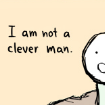-
Posts
26393 -
Joined
-
Last visited
-
Days Won
594
Everything posted by Vort
-
Excellent point. This was recognized back in the 1920s or 1930s, when Bohr freely admitted that his "planetary model" of the atom couldn't be literally true because the "orbiting" electron would radiate away its energy immediately. That problem was solved by the introduction of quantum mechanics to explain electron states using "cloud" probabilities called orbitals. I expect a similar thing is going on here, where these strange effects are explained through QM hand-waving, though we would probably need to ask a real physicist to find out.
-
Nope. I'm not an authority, but the whole idea of superconductors, and the reason they seem to be magical, is that there is no resistance to electrical current. Not "very, very low", but literally "zero". So you can do magical things like establish a permanent magnetic-field-inducing current in a superconductor. Again, I'm not an authority, but my understanding is that that is exactly how MRIs work. (Well, there's a lot more to it than that, of course, but the basis of MRI is a very strong, constant magnetic field that lines up the hydrogen dipoles so that an RF burst can flip them and then the "receiving coil" can measure their recovery. But you have to start with the strong, constant magnetic field.)
-
We're having a definite communication disconnect. Here's my imagined conversation about the magnets I described: Alan: I sure wish we could make a really strong magnet, not just these pathetic, wimpy ferrite magnets. Betty: How about neodymium? A: Well, sure, they're great. But what I REALLY want is a magnet that doesn't use ferrite domain lineups or the anisotropic properties of rare earths. I want a magnet that just, I don't know, magnets. Like an electromagnet, but it doesn't require a current input. I want to use it to put my daughter's 50-page report on 20th-Century Art and Poetry on the fridge. B: Sounds like you want a magnet that has an internal, permanent circular current inducing that magnetic field. A: Yes! Perfect! Except...the current would die away in milliseconds or less. Internal resistance, you know. B: What if...we used a superconductor? A: Brilliant! Except that we'd have to cool the magnet down to cryogenic temperatures to get it to work. I want a superstrong refrigerator magnet, something I could use even in boiling water without it losing its magnetic properties, not something that I have to put in liquid nitrogen to use. B: Oh, that's easy. All we have to do is to make a room-temperature superconductor. We could then take advantage of Lenz's Law to cause an induced circular current that produces a nice, strong, permanent magnetic field. A: And where would you get this "saved money", uh, "room-temperature superconductor"? That's what I was working from. (For those who didn't get the reference.)
-
You can't make a Lenz's Law magnet without superconductive material.
-
Just a word I made up meaning a really strong magnet, much stronger than what we used to play with as children.
-
This is exactly how e.g. modern MRI machines work. The superconductor that makes up the "tunnel" is established in the presence of a 1- or 2-tesla field. Then when the electromagnet creating the field is removed, the MRI is, in effect, a permanent magnet, assuming it doesn't get quenched. So you do this, but just on a much less expensive scale (no cryogenic refrigeration units).
-
AKA Lenz's Law
-
1. Bring the intended room-temp superconductor magnet above its Tc (the temperature at which it exhibits superconductivity). 2. Expose the intended magnet to a strong magnetic field. 3. While it is in the magnetic field, cool the magnet below its Tc. Vye-oh-lee! New permanent room-temp superconductor magnet, as long as you don't heat it to above its Tc (which will brick it).
-
The idea of a superconductor is that they have zero resistance. Nothing can have less resistance than zero, because "negative resistivity" would violate all sorts of conservation laws. Very interesting. I wonder what, exactly, was classified? The particulars of the development, I expect. Josephson published his ideas about the effects leading to a (what we now call) Josephson junction in 1962, and he won the Nobel Prize in physics for it in 1973. The idea itself was certainly well-known.
-
One consumer product area where room-temperature (or higher) superconductors might be game-changing would be permanent or semipermanent supermagnets. But with the advent of neodymium magnets, this niche has already been filled to some degree.
-
Since the ambient temperature of space is less than 3 kelvins, that's not really saying much. Pretty much any superconductive material will be superconductive at that temperature.
-
Possibly because the lead-copper-phosphorus-halogens-based superconductor candidate is inorganic.
-
I will believe this only when I see it. The engineering challenges are enormous; it's not obvious to me that a fusion reactor is possible, even in principle, unless there is a cold-fusion-like shortcut or a discovery that changes our understanding of physics.
-
Two-Bit da Vinci is about two steps above a clickbait channel. He has some good content, but his reviews and statements about things betray a lack of deep understanding of what he's talking about. Like many channel creators, he basically aggregates a bunch of content on a topic and then provides a kind of summary as a lit review of sorts. In other words, he talks about interesting things, but provides few if any original insights. He appears totally dependent on popular writeups as sources and evinces very limited understanding of what he's talking about. So I tend to avoid his channel.
-
Delenda est Carthago!
-
That came across as very dismissive. My apologies. I didn't mean it to be.
-
Because that's the narrative. Read Matthew 18. Christ sets a child in the midst of the disciples as a model for how they are to be: "Whosoever therefore shall humble himself as this little child, the same is greatest in the kingdom of heaven. And whoso shall receive one such little child in my name receiveth me." The "one such little child" Christ spoke of was not the little child being used as a model of innocence, but "one such little child"—that is, a Saint who had followed the Savior's instruction to "humble himself as this little child." This identification clearly carries over into the next verse: "But whoso shall offend one of these little ones which believe in me, it were better for him that a millstone were hanged about his neck, and that he were drowned in the depth of the sea."
-
That's not actually what Christ taught. "These little ones" referred to the Saints, not to little children.
-
My seventeen-year-old sent me this. This is the world he is inheriting, the world he will be marrying in and rearing children in. The agenda is no longer secret. These are unabashed child groomers, loud and proud of their openly nefarious work. I will very literally be damned if I don't do what I can to stop such evil people.
-
Better, I suppose, than a cat being named for a female dog.
-
Funny thing to name your cat.
-
I believe this idea is explicit in the endowment presentation.
-
5. In some contexts, "Adam" refers to the primal couple as a unit.
-
Engineering graduates aren't surly and paranoid. They just know. Fear the knowledge.
-
Some accidents are happy accidents.







